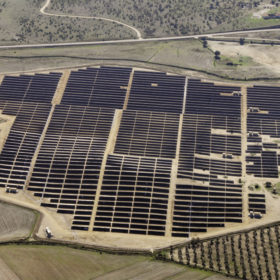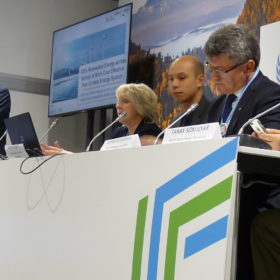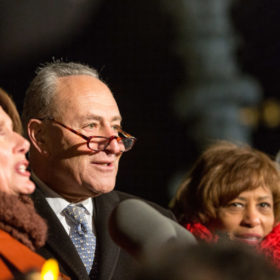4: Wrapping it up
Despite the rollercoaster of emotions experienced throughout the year, the final quarter of 2018 wrapped up on a relatively positive note, with the scrapping of Spain’s sun tax, and ambitious goals either announced or reaffirmed. Read on to discover what happened in the months of October to December.
3: PV’s day of judgement
China continued to take center stage in Q3 2018; however the focus shifted from its now notorious policy change. In both positive and negative news, Europe announced the end of the MIP, at almost the same time as the United States slapped tariffs on Chinese imports of inverters, AC modules and non-lithium batteries. Yin yang. Ping pong.
2: And let the solar games commence
While China’s PV policy announcement dominated the headlines in Q2 2018, there were a lot of other significant happenings in the world of solar, not least the EU’s 32% renewable energy targets, rumors of U.S. tariffs on inverters, PV records in Germany, and unexpected new partnerships. Read on to discover the highlights from April to June.
1: What a difference a year (in PV) makes
Dire warnings about the state of our planet characterized 2018, with a plethora of reports released calling for climate action. The solar PV, and storage, industries have a leading role to play in the required energy transition: this bold quest was taken on by many over the last year, with technological progress and expansion seen upstream and downstream, and in policy, globally. Like last year, China took all by surprise, this time, however, in the form of its abrupt 31/5 policy change, the effects of which are still being felt in almost every corner of every market. And of course, Tesla grabbed the headlines – also for rather more unsavory reasons than in 2017. In this first out of a total of four posts pv magazine reflects on Q1.
Europe moves further towards large-scale battery cell production
More than a dozen European ministers of economic affairs have released a statement setting out the next steps to turn Europe into an industrial hub for large-scale cell production. The role of SMEs and competition was highlighted as ministers said European cells should provide innovation in terms of raw material use and sustainability, hinting at a pivot away from lithium-ion.
Energy storage inverter shipments to reach 3 GW in 2018, 7 GW in 2022
According to IHS Markit, energy storage inverter shipments are on track to reach 3 GW in 2018, growing to 7 GW by 2022. Currently, SMA is the market leader. Overall, the competitive landscape is “highly volatile” with expectations that consolidation will continue.
UK utility to add storage at water treatment sites
Driven by the ambition to reduce costumer bills, Northumbria Water is turning its head to storage systems for peak shedding and uninterrupted power supply. The MW-scale storage project will use second-life EV batteries from Renault.
Australia’s NSW plans 24 pumped hydro projects totaling 7 GW
Australia’s New South Wales Government has launched its ambitious pumped hydro roadmap designed to back the rising level of wind and solar in the energy mix. Meanwhile, the board of government-owned energy provider Snowy Hydro has given the green light to its landmark $4 billion pumped hydro expansion project, Snowy 2.0.
Policy plan for rapid transition to 100% renewable-powered Europe handed to politicians
Politicians take note: “The energy transition is not a question of technical feasibility or economic viability, but one of political will.” Indeed, according to a new study, it is possible to rapidly transition to a Europe 100% powered by renewables and with zero greenhouse gas emissions. Solar PV leads the charge, followed by wind. Overall, eight policy recommendations have been laid out to achieve this bold goal by 2050.
US: Top Senate Democrat calls for permanent renewable energy, storage, EV tax credits
U.S. Senator Chuck Schumer is calling for permanent tax credits for clean electricity, storage and EVs as part of a set of demands for the form of any new infrastructure package. What does this mean for solar?










